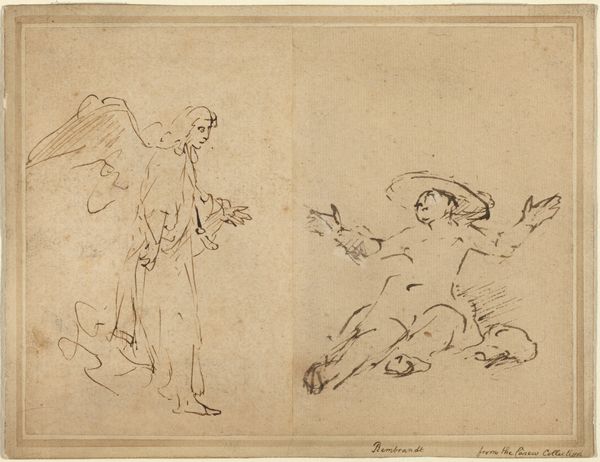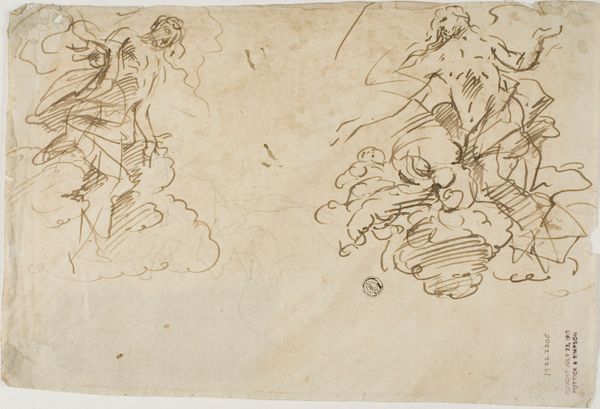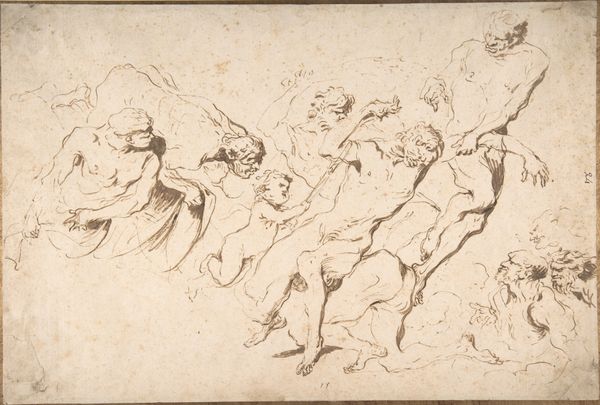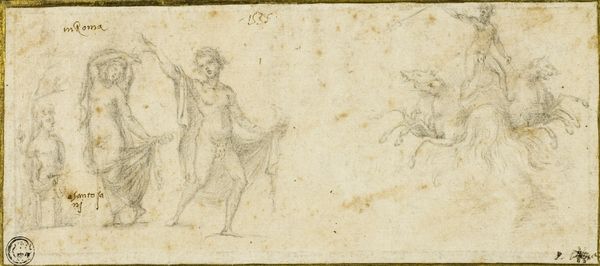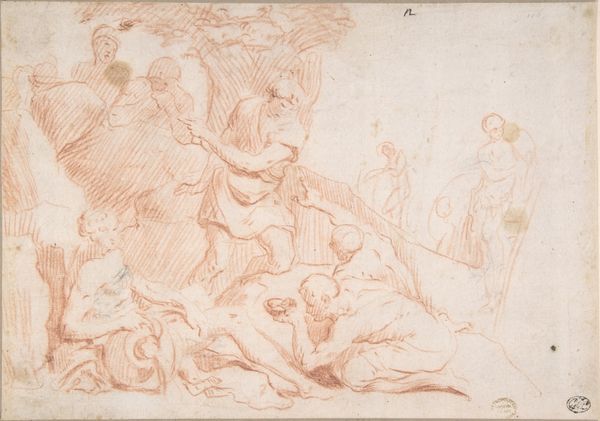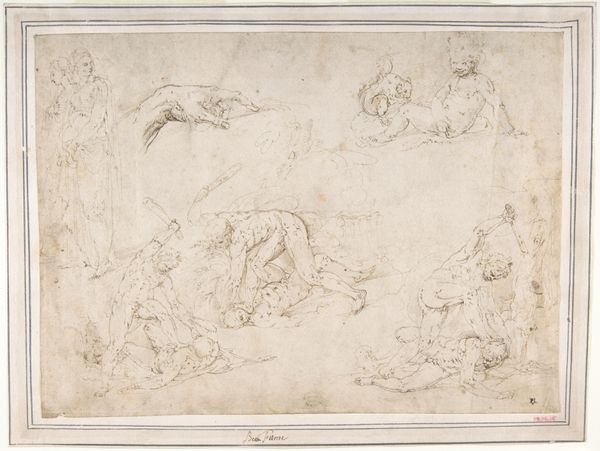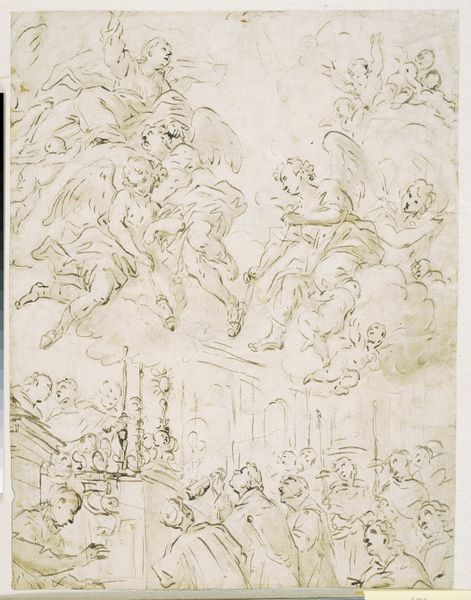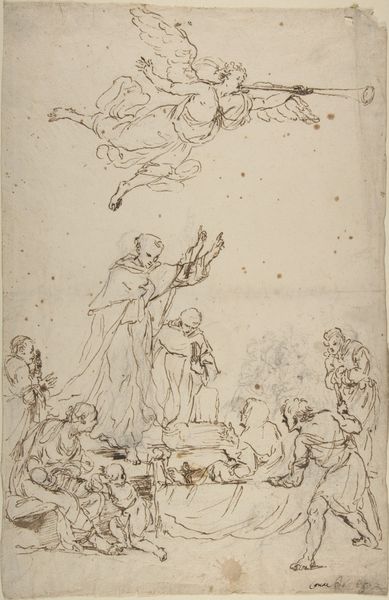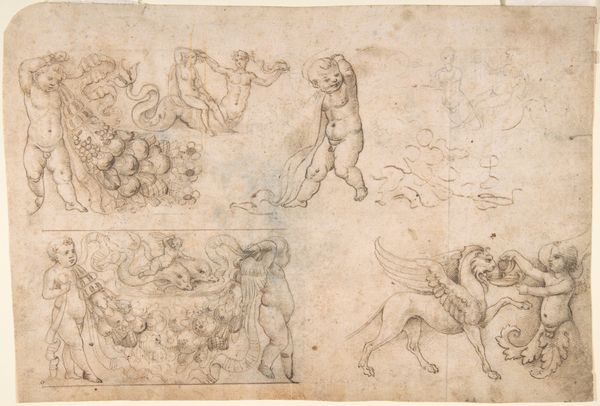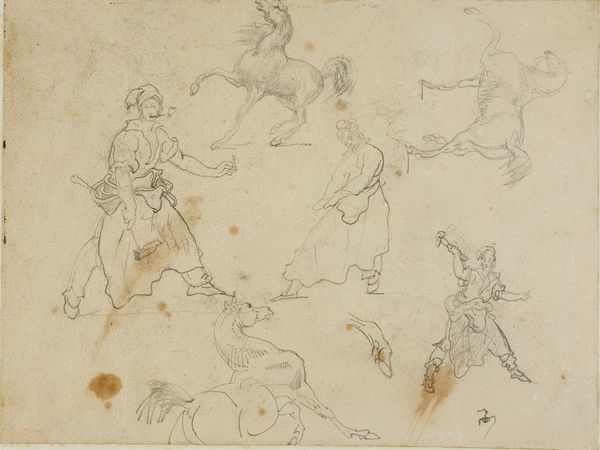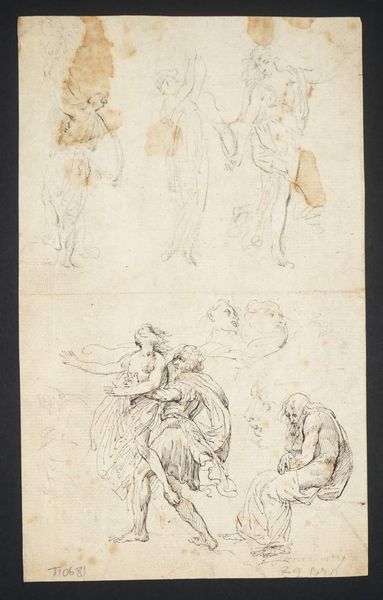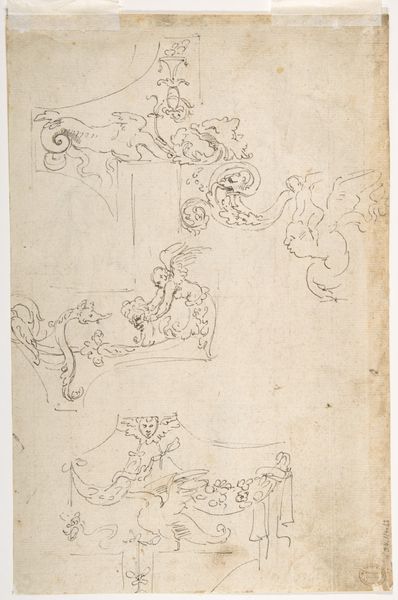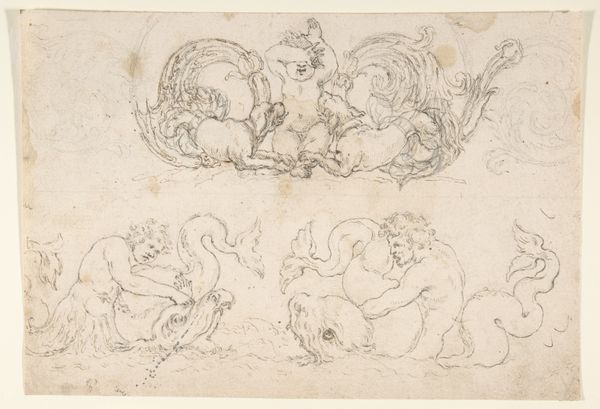
Sacrifice of Isaac (recto); Jacob's Dream (verso) 1613 - 1620
0:00
0:00
drawing, paper, ink, pen
#
drawing
#
ink drawing
#
baroque
#
figuration
#
paper
#
ink
#
line
#
pen
#
history-painting
Dimensions: 173 × 255 mm
Copyright: Public Domain
Editor: Here we have Guercino's pen and ink drawing, "Sacrifice of Isaac (recto); Jacob's Dream (verso)," created between 1613 and 1620. I’m immediately struck by its energy and raw emotion. The figures are so expressive. What do you see in this piece, especially concerning its themes? Curator: What I see is a potent example of how art engages with power, faith, and sacrifice, not in the past, but reflecting ongoing societal struggles. This piece encapsulates themes deeply embedded in the socio-political landscape of its time, themes we can unpack through a modern lens. Look at Abraham, poised to sacrifice Isaac. Consider the weight of patriarchy, of divine command, and the unquestioning obedience it demands. Does the drawing challenge or reinforce these power structures, do you think? Editor: I hadn't considered it that way. I suppose I was mostly focused on the drama of the moment. So, you see this as potentially subversive, or at least prompting questions about authority? Curator: Precisely. Think about how often these stories are presented as purely celebratory of faith. But what about the other perspectives? Isaac's for example, or even the ram who ultimately becomes the substitute. This also highlights how religious narratives were—and continue to be—used to justify certain social orders and power dynamics. How does it resonate with current conversations about bodily autonomy and control? Editor: That gives me a lot to consider, particularly with the composition on the other side, Jacob's Dream. It shifts the perspective, it opens a new interpretative dimension by showing an individual’s connection to a higher power, not mediated through potentially dogmatic narratives. Curator: Exactly. By placing these scenes on opposing sides, Guercino encourages a dialogue, and perhaps a challenge of those power dynamics inherent in the ‘Sacrifice’. It's a fascinating interplay that goes far beyond a simple biblical illustration, reflecting then and now our constant negotiation with established doctrines and personal liberation. Editor: This has really shifted how I view this drawing! It’s much more than just a depiction of a Bible story, it’s actively engaging with larger conversations about faith and power.
Comments
No comments
Be the first to comment and join the conversation on the ultimate creative platform.
